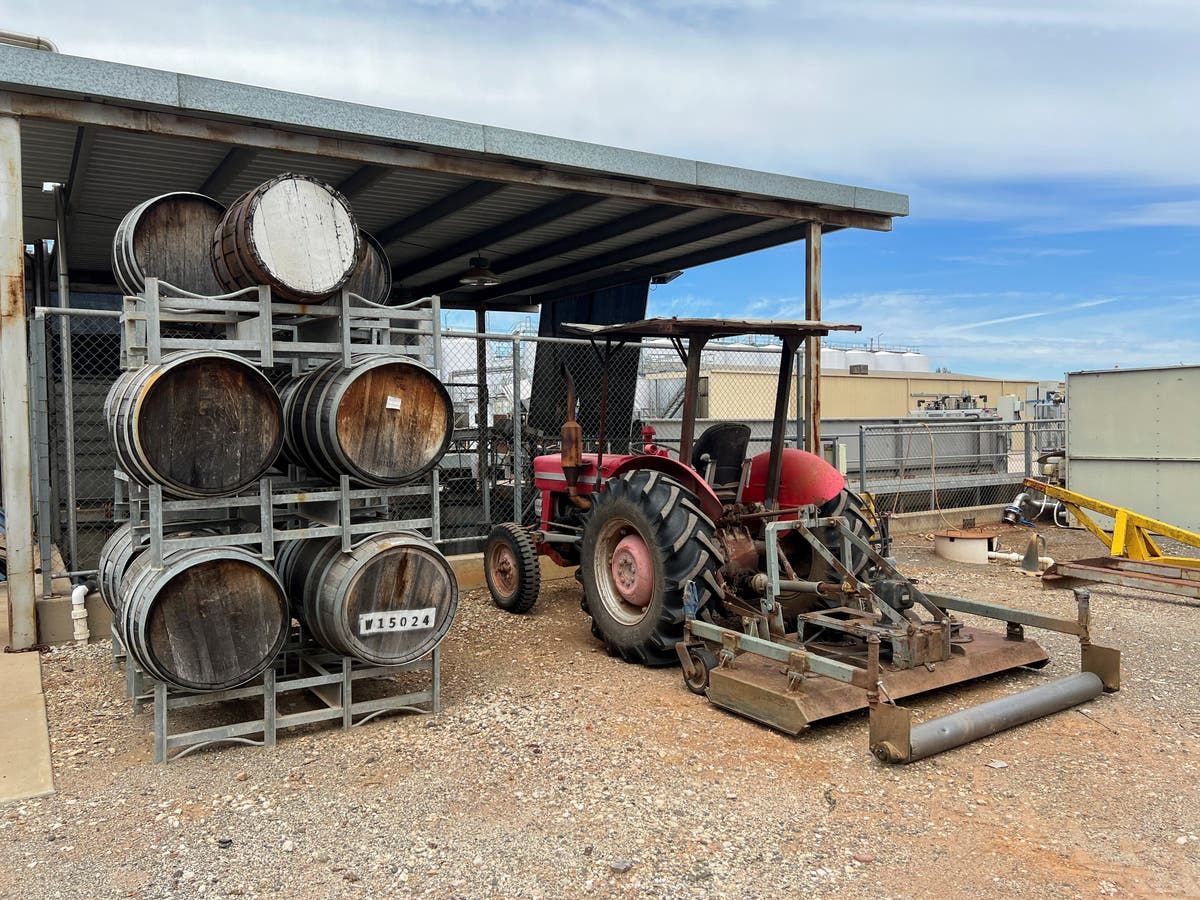Millions of vines are being destroyed in Australia and tens of millions more must be removed to stop overproduction that has crushed grape prices and threatens the livelihoods of wine growers and producers.
The decline in wine consumption around the world has hit Australia especially hard, as demand for the cheaper reds that are its main product contracts more rapidly, and in China, the market it has depended on for growth until recent years. years.
The world's fifth-largest wine exporter had more than two billion liters, or about two years' worth of production, in storage as of mid-2023, the latest figures show, and some is going to waste as owners They are quick to get rid of them at any cost. .
“There's only so much time we can keep farming and losing money on it,” said fourth-generation grower James Cremasco, as he watched the clang of yellow bulldozers rip out rows of vines his grandfather planted near the town of Griffith. , in the southeast of the country.
About two-thirds of Australia's wine grapes are grown in irrigated hinterlands like Griffith, and its landscape is shaped by grape-growing techniques brought by Italian immigrants who arrived around the 1950s.
An excavator digs up vines near the town of Griffith in southeastern Australia on February 27
(REUTERS)
As major wine producers such as Treasury Wines and Carlyle Group's Accolade Wines refocus on more expensive bottles that sell better, areas around Griffith are struggling, with unharvested grapes wilting on the vines.
“It feels like an era is ending,” said Andrew Calabria, vineyard owner and third-generation winemaker at Calabria Wines.
“It's hard for growers to look out the back window and see a pile of dirt instead of vines that have been there as long as they've known.”
Nearby, the remains of 1.1 million vines that once formed one of Australia's largest vineyards were piled in piles of twisted and twisted wood as far as the eye could see.
Red wine is the one that has suffered the most. In regions such as Griffith, prices for grapes used fell to an average of A$304 ($200) a tonne last year, the lowest in decades and down from A$659 in 2020, data shows. from industry body Wine Australia.
The government, which forecasts lower prices again this year, said it recognizes the significant challenges facing producers and is committed to supporting the sector, although many producers say it can do more.
Farmer James Cremasco holds unharvested, shriveled grapes near the town of Griffith in southeastern Australia, February 26,
(REUTERS)
Cremasco said some of its red grapes were selling for just over A$100 a tonne.
To balance the market and raise prices, up to a quarter of the vines in areas like Griffith must be uprooted, said Jeremy Cass, director of Riverina Winegrape Growers, a growers group there.
That would destroy more than 20 million vines on 12,000 hectares (30,000 acres), Reuters calculations based on Wine Australia data show, or about 8% of Australia's total vine area.
Vintners and winemakers in other regions have also been pulling out vines.
“If half the vines in Australia were uprooted, it still might not solve the oversupply,” said a Western Australian wine producer.
Still, many growers unwilling to pull out the vines are losing money while they wait for the market to improve.
“It's eating away at the wealth,” said KPMG wine analyst Tim Mableson, who estimates that 20,000 hectares (49,000 acres) of vines need to be removed nationwide.
Health concerns are driving consumers around the world to drink less alcohol and, when they do drink wine, they choose more expensive bottles.
Wine storage tanks sit behind rows of vines near the town of Griffith in southeastern Australia, February 27.
(REUTERS)
Chile, France and the United States are among the other major wine producers also struggling with oversupply, and even prime areas like Bordeaux are tearing up thousands of hectares of vines.
When China blocked imports during a political dispute in 2020, Australia lost its largest wine export market by value. And unlike Europe, it does not offer farmers any financial aid to help them destroy vines and excess wine.
Although China is expected to allow imports again this month, that will not eliminate the glut, as demand there has fallen much faster than elsewhere.
Wine sold for less than A$10 a liter (most of it made from grapes grown in areas such as Griffith) accounted for two-thirds of the value of Australian wine exports worth A$1.9 billion in the year to December 2023. says Wine Australia.
Some areas are doing better, such as Tasmania and Victoria's Yarra Valley, which produce more white wines and lighter, more expensive red wines that are growing in popularity.
But along Griffith there are clusters of metal storage tanks, each holding thousands of liters.
A view shows winemaking equipment at a Calabria Wines facility in the town of Griffith, southeastern Australia.
(REUTERS)
“Everyone is trying to eliminate wine,” said Bill Calabria, Andrew's father, adding that wineries were “practically giving it away” to make room for the incoming harvest.
Many growers are turning to citrus and pecan trees.
Cremasco hopes to make greater profits from the plum trees it is planting on its uprooted acreage, while GoFARM, a corporation, is planting more than 600 hectares (1,500 acres) of almonds nearby, also replacing the vines.
“There will not be a next generation of family winegrowers,” Cremasco added. “They will all be big corporations and all the local young people will work for them.”












